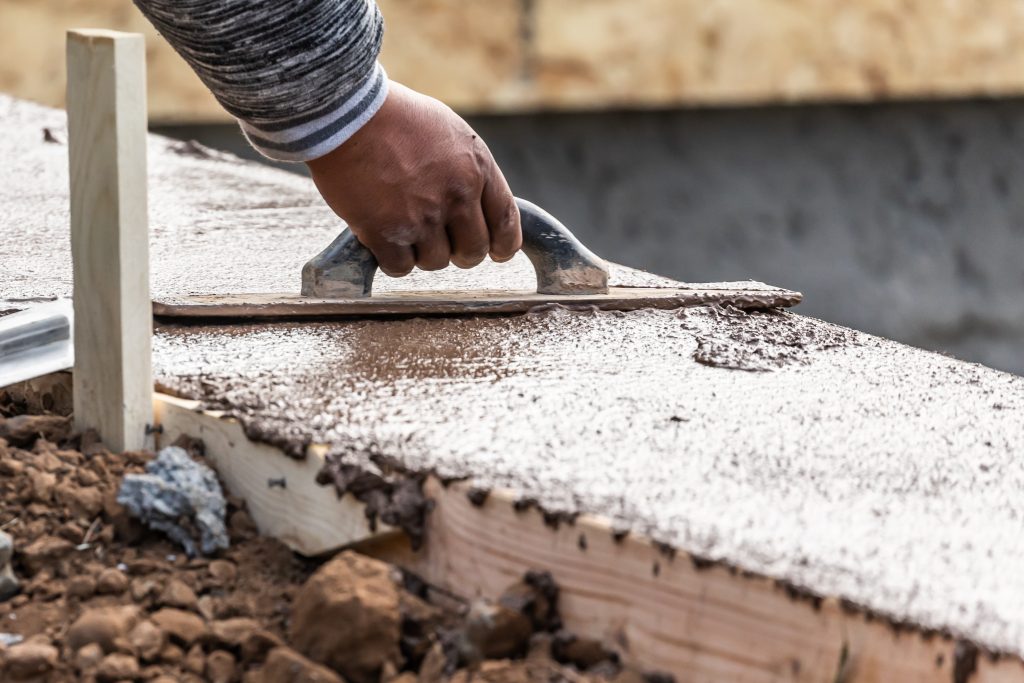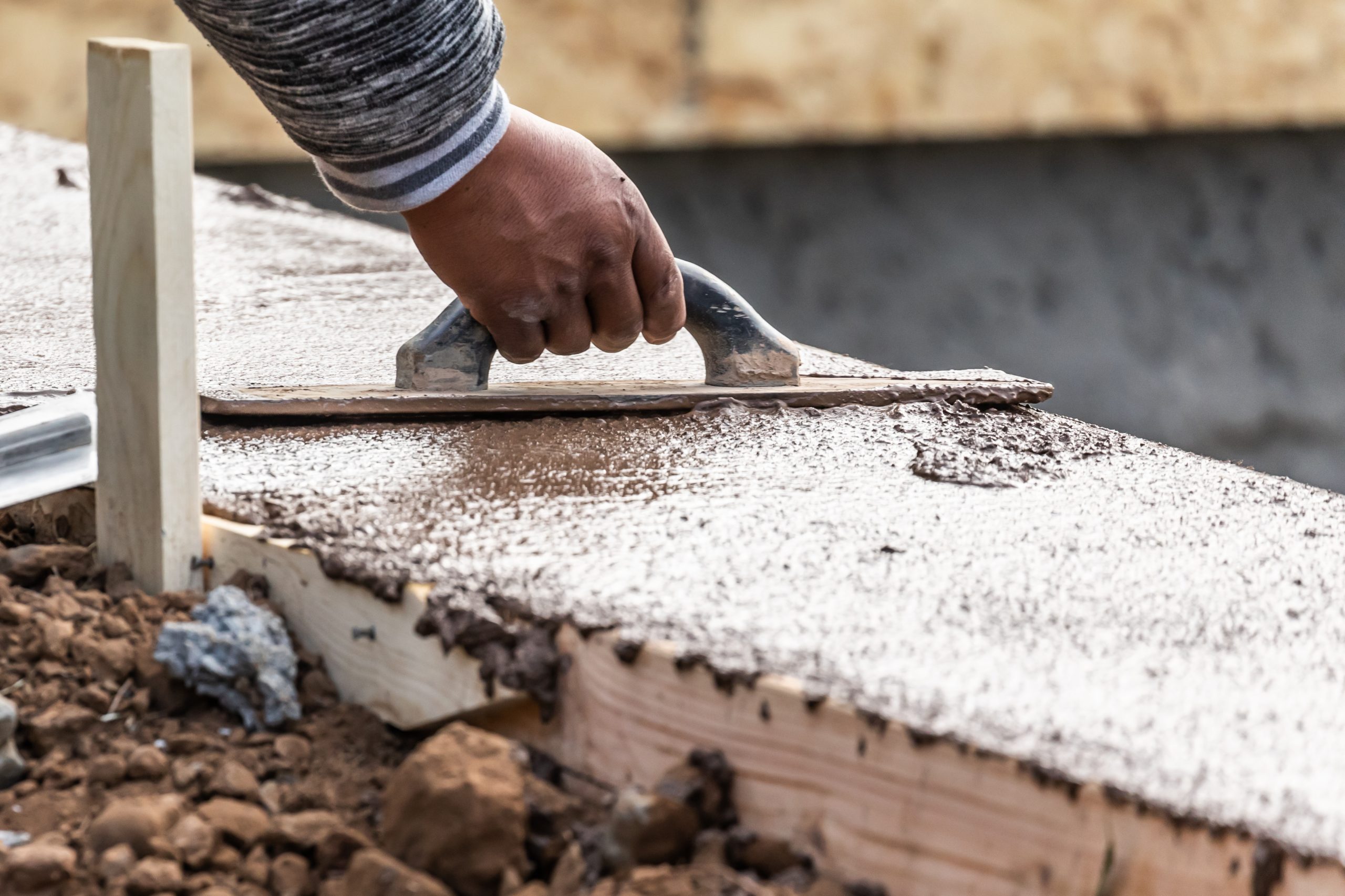Transformative innovation for the built environment centres upon sustainability and the extended lifecycle of buildings. Self-healing concrete is being widely tipped as a game changer for achieving those objectives.

What is self-healing concrete?
Self-healing concrete automatically repairs cracks through chemical or biological processes.
Despite being defined as a new technology, self-healing concrete is not a recent invention. We can thank the Roman Empire for the inspiration behind self-healing concrete. Roman structures and roads that were built over two thousand years ago, and are still standing in part today, used self-healing materials, namely volcanic ash and quicklime.
Today, the plan is to achieve the same results by developing and utilising modern versions of self-healing concrete.
How does self-healing concrete work?
Self-healing concrete is infused with healing agents such as embedded capsules, bacteria, polymers or chemical compounds to seal cracks and combat water ingress. The bacteria consume the concrete nutrients to create a by-product of limestone which fills and seals the cracks.
The benefits of self-healing concrete
Increased lifespan of structures
By naturally repairing cracks over time, self-healing concrete significantly reduces the potential for damage that would otherwise compromise structural integrity. This considerably extends the lifespan of the building.
Reduced maintenance costs
Self-healing concrete doesn’t require the repairs and ongoing maintenance associated with traditional concrete, which keeps lifecycle costs to a minimum.
Enhanced durability
Cracks cause damage to concrete structures. Through autonomous maintenance and repair, self-healing concrete makes structures more durable, particularly under challenges such as freezing temperatures and corrosion.
Reduced carbon emissions
Traditional concrete accounts for 8% of global carbon emissions. Because of its extended lifespan, the reduced volume of cement required and fewer maintenance visits, self-healing concrete generates a smaller carbon footprint.
Case study
Bus lane at Schiphol Airport (Basilisk Concrete)
After treatment with Basilisk ER7 self-healing concrete on the bus lane, the identified benefits were:
- Lifecycle cost reduction of approximately 33%
- More than 90% reduction on CO2 emissions
- Design life extended by a minimum of 15 years
- Less downtime
UK self-healing concrete research projects
In the UK, pilot projects and research initiatives have been ongoing to explore the viability of self-healing concrete.
The first site trial of self-healing concrete was the Materials for Life (M4L) project of 2013-2018, led by Cardiff University’s School of Engineering alongside academics from Bath and Cambridge universities and industrial partner, Costain. They trialled three techniques using:
- Shape-memory polymers
- Organic and inorganic healing agents
- Tiny capsules of lightweight aggregates
The results were reported as ‘a first indication of the overall performance of the combined systems and the interaction between the various healing processes’. A subsequent government-backed project Resilient Materials for Life (RM4L)began in 2018 and is ongoing.
Other research studies into the viability and future of self-healing concrete include the Effect of Self-Healing Concrete on Building Durability in the UK Construction Market study by the University of Bedfordshire, and the Bacteria-based self-healing concrete – a life cycle assessment perspective paper by the University of Bath.
Self-healing concrete adoption challenges
There are concerns over the high initial costs of self-healing concrete, although it is anticipated that as more research takes place, innovation around materials and manufacturing processes will drive those costs down.
Environmental factors have also been identified as a potential issue with more detailed research required to get the blend of self-healing components right. For example, a paper published by the National Library of Medicine, states ‘harsh conditions in concrete matrices are unsuitable for bacterial life, including high alkalinity, high temperatures during manufacturing processes, and limited oxygen supply’. Such scientific concerns call into question self-healing concrete’s consistent performance over time and across different environmental conditions.
Centre for Construction Best Practice (CCBP) Membership
The CCBP pioneers the exploration and adoption of innovative, sustainable materials, such as self-healing concrete, that enhance construction efficiency and sustainability. Our members regularly share evidence-based reports and research around current topics.
Do you have research to share? Find out more about becoming a CCBP member and how your contribution can help us to influence more innovation across the built environment.
References
- Energy Post – Concrete: 8% of global emissions and rising. Which innovations can achieve net zero by 2050?
- Basilisk Self-Healing Concrete – Case study: Bus lane at Schiphol Airport
- Cardiff University – UK’s first trial of self-healing concrete
- ResearchGate – Materials for Life (M4L): Combining multi-scale healing techniques in cementitious materials
- Institute for Civil Engineers – Materials 4 Life
- ResearchGate – Effect of Self-Healing Concrete on Building Durability in the UK Construction Market
- ScienceDirect – Bacteria-based self-healing concrete− A life cycle assessment perspective
- National Library of Medicine – Current challenges and future directions for bacterial self-healing concrete
